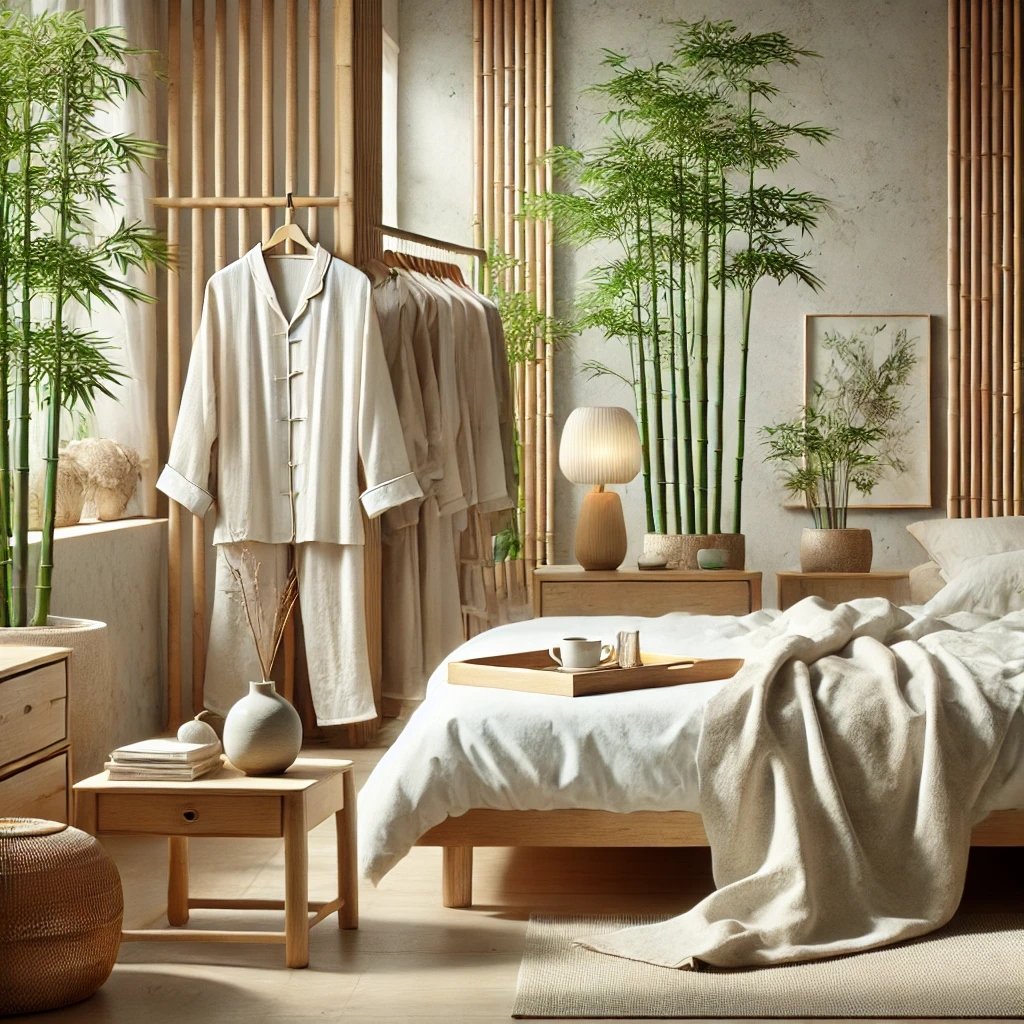Bamboo pajamas have taken the sleepwear market by storm, combining comfort, style, and sustainability in a way that few other fabrics can. As consumers become more conscious of their environmental footprint, bamboo has emerged as a popular alternative to traditional materials like cotton and polyester. This article explores the benefits of bamboo pajamas, their production process, and why they are an excellent choice for both individuals and the planet.
Bamboo Pajamas’s Benefits
1. Unparalleled Comfort Of Bamboo Pajamas
One of the primary reasons for the growing popularity of bamboo pajamas is their extraordinary comfort. Bamboo fabric is exceptionally soft, often compared to cashmere or silk. This softness is due to the round and smooth structure of bamboo fibers, which makes them gentle against the skin, reducing irritation and promoting a good night’s sleep.
2. Breathability and Moisture-Wicking
Bamboo pajamas are highly breathable, allowing air to circulate and keep the body cool throughout the night. This breathability is coupled with excellent moisture-wicking properties. Bamboo fibers can absorb moisture away from the skin, helping to regulate body temperature and keep the wearer dry and comfortable. This feature is particularly beneficial for individuals who experience night sweats or live in warmer climates.
3. Hypoallergenic Properties Of Bamboo Pajamas
Bamboo fabric is naturally hypoallergenic, making it an ideal choice for people with sensitive skin or allergies. Unlike synthetic materials, bamboo does not cause irritation and is resistant to dust mites and mold. This natural resistance helps in creating a healthier sleeping environment.
4. Durability and Easy Care
Despite its soft texture, bamboo fabric is incredibly durable. Bamboo pajamas can withstand numerous washes without losing their shape or softness. They are also easy to care for, typically requiring a gentle machine wash and air drying to maintain their quality over time.
The Production Process of Bamboo Pajamas
Understanding the production process of bamboo fabric provides insight into its sustainability and benefits. Here is a step-by-step overview of how bamboo is transformed into the luxurious fabric used in pajamas:
1. Harvesting
Bamboo is a highly renewable resource, growing rapidly without the need for pesticides or fertilizers. It can be harvested every three to five years, making it a sustainable alternative to traditional textiles. The harvesting process is environmentally friendly, as bamboo plants continue to grow and regenerate after cutting.
2. Processing
The harvested bamboo is broken down into pulp through either a mechanical or chemical process. The mechanical process is more environmentally friendly, involving crushing the bamboo and using natural enzymes to break it down into fibers. The chemical process, although more efficient, uses chemicals like sodium hydroxide to dissolve the bamboo and extract the fibers.
3. Spinning and Weaving
Once the bamboo fibers are extracted, they are spun into yarn and then woven into fabric. The resulting fabric is soft, smooth, and highly breathable, ideal for making comfortable pajamas. This fabric can be dyed and finished with eco-friendly methods, ensuring that the final product is safe for both the wearer and the environment.
Environmental Benefits of Bamboo Pajamas
Bamboo pajamas offer several environmental benefits, making them a sustainable choice for eco-conscious consumers:
1. Reduced Water Usage
Bamboo requires significantly less water to grow compared to cotton. Cotton is one of the most water-intensive crops, with thousands of liters needed to produce a single kilogram of cotton. In contrast, bamboo thrives with minimal water, making it a more sustainable option.
2. Minimal Chemical Use
As mentioned earlier, bamboo grows without the need for pesticides or fertilizers. This not only reduces the chemical runoff into soil and water but also ensures that the final fabric is free from harmful residues. Additionally, when processed mechanically, bamboo fabric is produced with minimal chemical intervention.
3. Carbon Sequestration
Bamboo is known for its remarkable ability to absorb carbon dioxide and release oxygen. A bamboo grove can absorb significantly more CO2 compared to an equivalent area of trees, making it a powerful tool in combating climate change. By choosing bamboo pajamas, consumers are indirectly supporting this natural carbon sequestration process.
Style and Variety in Bamboo Pajamas
Bamboo pajamas are available in a wide range of styles, colors, and designs, catering to different preferences and needs. From classic button-down sets to modern loungewear, bamboo pajamas offer versatility and elegance.
Additionally, bamboo pajamas are suitable for all seasons. Their breathable nature makes them perfect for warm summer nights, while their ability to retain warmth without overheating makes them comfortable during cooler months. This adaptability adds to their appeal, providing year-round comfort.
Bamboo pajamas represent a perfect blend of comfort, sustainability, and style. Their soft texture, breathability, and hypoallergenic properties make them an excellent choice for anyone seeking a better night’s sleep. The sustainable production process and environmental benefits further enhance their appeal, making them a responsible choice for eco-conscious consumers.






